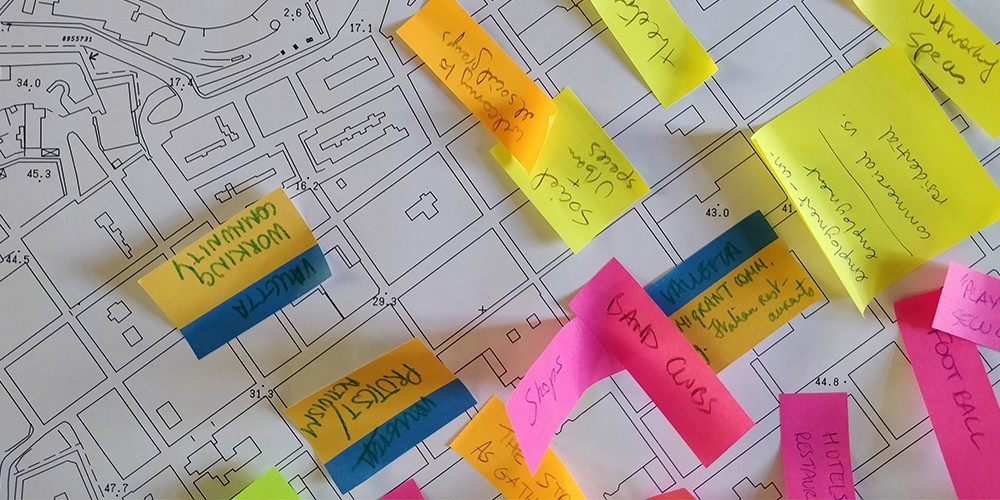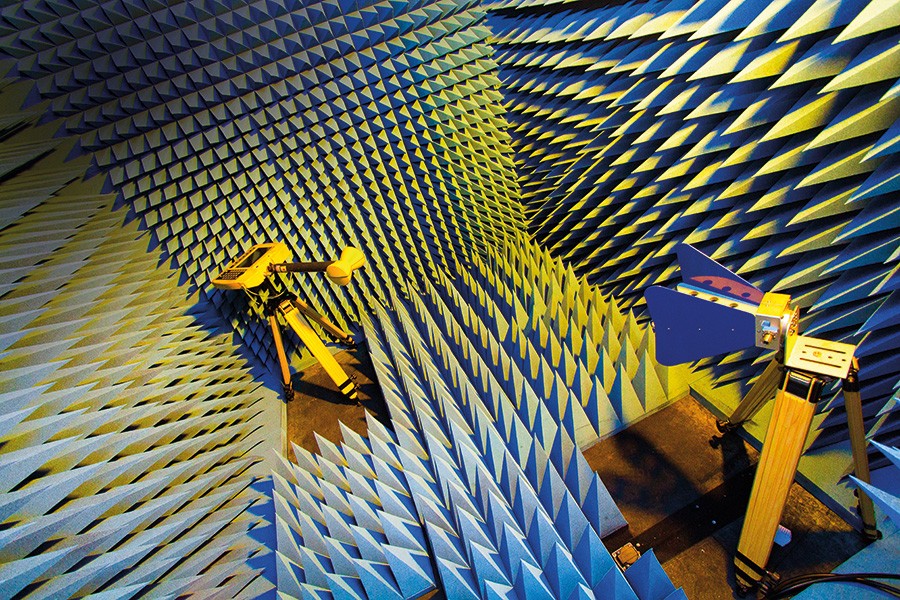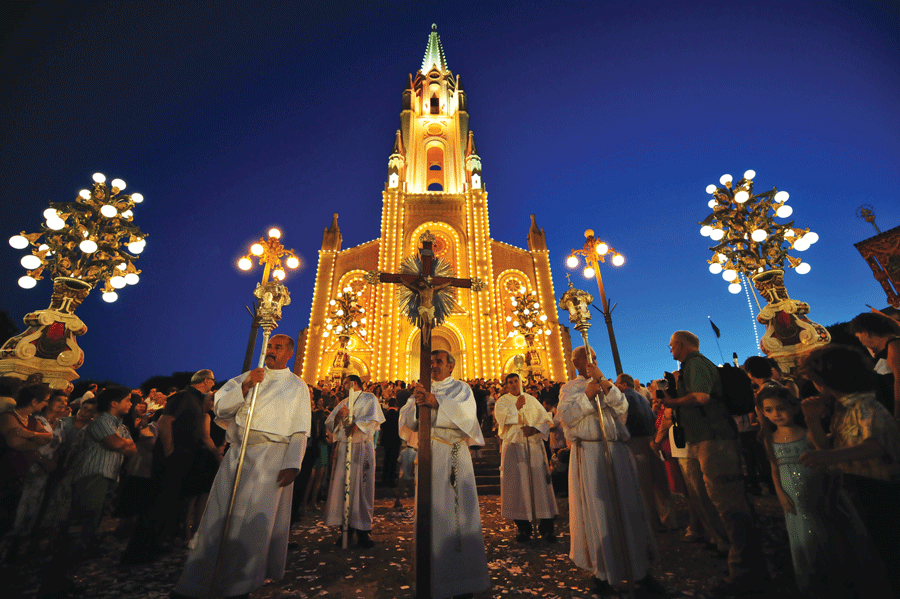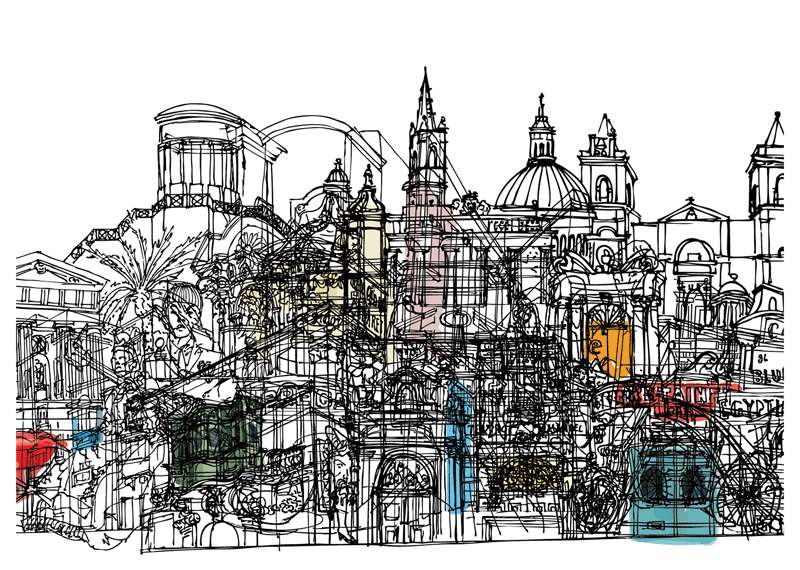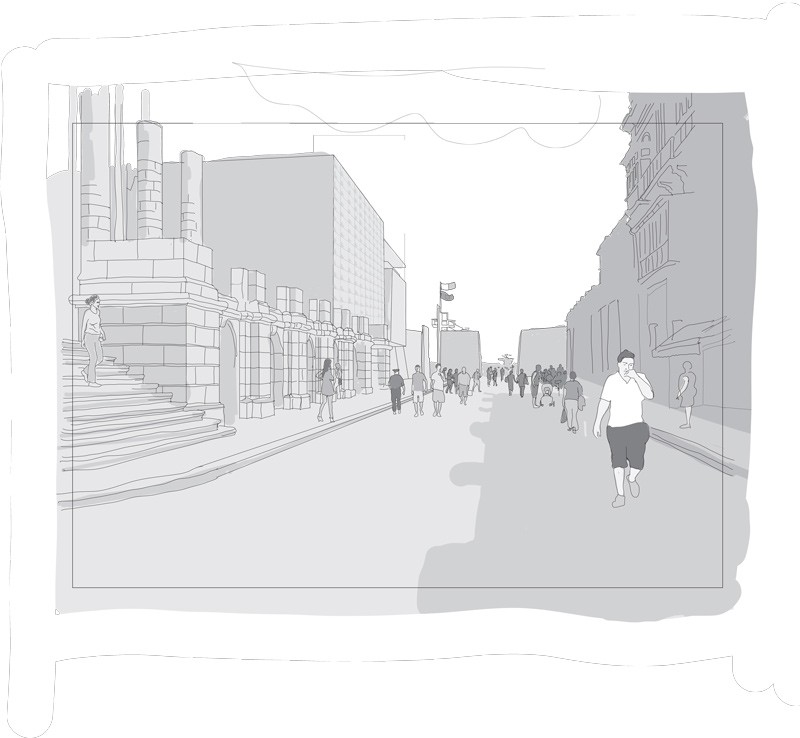Audience matters
Valletta 2018 in collaboration with Arts Council MaltaContinue reading
Sounds of silence
| Tech Specs |
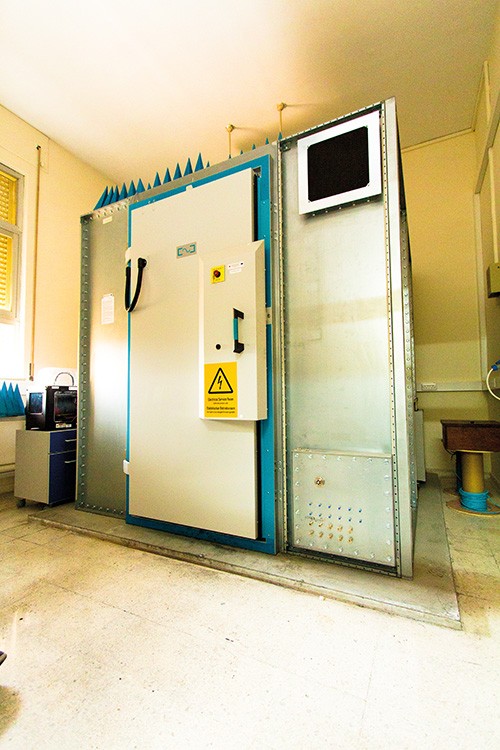
Dimensions: 2.5m x 2.5m x 2.5m Weight: 2 tonnes Frequency: 800MHz – 18GHz Price: €140,000 |
Everything in the world can emanate sound waves. These are invisible, consisting of vibrating particles in the air which can strike our eardrums, which lets humans hear. But what if you want to measure waves coming from a particular object?
An anechoic (echo-free) chamber is a heavy, metal enclosure with inner walls covered in foam wedges made from a radiation absorbent material. Any emitted sound or electromagnetic waves become trapped between these wedges until all their energy is completely absorbed. The chamber also eliminates all noise from exterior sources. Simply put, speak in an anechoic chamber, and you will hear the pure sound of your voice echo-free. The volume of these chambers is dictated by the size of the objects as well as the frequency of the device under investigation. They can be anywhere from the size of an old television monitor to the size of an aircraft hanger.
So what are they used for?
Testing electronic devices that radiate acoustic or electromagnetic waves and mapping out radiation patterns of antennas. It’s useful for systems such as satellites, radars, computers, missiles, and vehicles. Measurements aim to determine characteristics such as susceptibility, system sensitivity, effective radiated power, tracking ability, and comparability. The chambers can also be used to evaluate the effect of electromagnetic fields on human tissues, a type of experiment that has already been carried out in the University of Malta (UoM) anechoic chamber. Manufacturers of electronic equipment are required to conduct electromagnetic compatibility and immunity testing prior to placing a device on the market. This ensures that they won’t generate too much electromagnetic disturbance and will also be sufficiently immune from fields generated by other sources. Due to this new equipment, the UoM will be able to provide pre-compliance testing services to companies, which will prepare their devices for expensive compliance testing in certified laboratories, saving them a good sum of money.
Informal and formal cultural disruption
Valletta is preparing to be the European Capital of Culture (ECoC) in 2018. In its run-up a Cultural Mapping Project is currently being implemented in Malta to map cultural places around the Islands. The project is focusing on public space discourse in a contemporary urban setting.Continue reading
Multicultural Valletta
Valletta will be the European Capital of Culture in 2018 and has served as the centre of multiculturalism in Malta since its beginning. Built soon after the victory of the Hospitaller Order of St John over the Ottoman Empire in 1565, it meant to serve as their Fortress Convent. The knights came from all over Europe and helped attract people from all lifestyles. Valletta had a cosmopolitan atmosphere that impressed itself on the character of the city helping to enrich the country especially in creativity. The Order of St John managed to establish a ruling system which seeped down the social scale and gave character to the Harbour area. The cultural magnetism of the City was underlined by its political centrality. Functioning as an administrative capital, Valletta determined the fashions and values of the Grand Master’s court. Similar to early modern European capitals, Valletta was a powerhouse of cultural change.
British rule in the 19th century introduced new cultural elements with an Anglo-Saxon tone. The Royal Navy and the numerous other ships that anchored in Valletta’s adjacent harbours poured in many foreigners who came for short or long stays and mingled with the locals. This made Valletta a melting pot of nations, cultures, tastes, values and mentalities. Yet novelties did not manage to destroy or replace what had already been entrenched in the life and fabric of the city. All it did was enrich it further. The city put on a new dress but did not renounce its soul, and the residents adapted to the new trends without forgetting their roots.
Valletta continued to grow in its multicultural mentality, a natural process for a central Mediterranean city. It is an administrative and cultural centre. Over five centuries, people from different cultural environments have thrived and lived harmoniously together.

